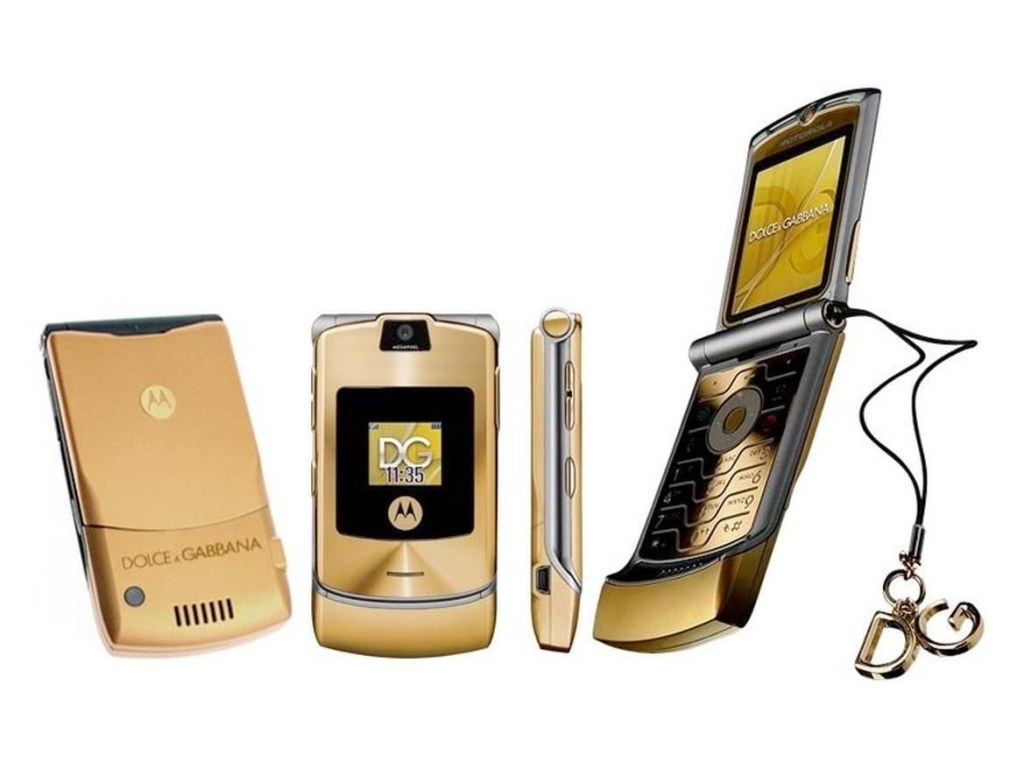The Power And Progress Of Technology Innovation In The 2000s: Embrace The Future Now!
Technology Innovation 2000s: A Journey Towards a Digital Revolution
Introduction
Dear Readers,
3 Picture Gallery: The Power And Progress Of Technology Innovation In The 2000s: Embrace The Future Now!



Welcome to this comprehensive article on technology innovation in the 2000s. In this digital era, technology has become an integral part of our lives, transforming the way we communicate, work, and live. The 2000s witnessed a significant leap in technological advancements that shaped the world as we know it today. From the emergence of smartphones to the birth of social media, this decade marked the beginning of a digital revolution. Join us as we take a deep dive into the key innovations and their impact on society.
Table of Contents

Image Source: techrepublic.com
1. Introduction
2. What is Technology Innovation in the 2000s?
3. Who Were the Key Players?
4. When Did These Innovations Occur?
5. Where Did the Technology Revolution Take Place?

Image Source: techrepublic.com
6. Why Were These Innovations Necessary?
7. How Did These Innovations Transform Our Lives?
8. Advantages and Disadvantages of Technology Innovation 2000s
9. FAQ
10. Conclusion

Image Source: zdnet.com
11. Final Remarks
What is Technology Innovation in the 2000s?
The technology innovation in the 2000s refers to the rapid development and introduction of groundbreaking technologies that revolutionized various industries. It encompassed advancements in areas such as telecommunications, computing, internet, and multimedia. The digital landscape witnessed significant progress during this period, leading to a shift in the way businesses operated and individuals interacted.
1. The Rise of Smartphones
📱 The introduction of smartphones was undoubtedly one of the most significant innovations of the 2000s. These devices combined the functionalities of a mobile phone and a personal digital assistant, allowing users to make calls, send messages, and access the internet from a single device. Brands like Apple, with the launch of the iPhone in 2007, revolutionized the smartphone industry and set the stage for the mobile revolution.
2. Social Media: Connecting People Globally
🌐 Social media platforms emerged as a powerful tool for communication and networking. Platforms like Facebook, Twitter, and LinkedIn provided a space for people to connect, share ideas, and express themselves on a global scale. The ability to stay connected virtually and share content effortlessly transformed the way we interacted with others.
3. Cloud Computing: The Power of Remote Data Storage
☁️ Cloud computing revolutionized the storage and accessibility of data. It allowed individuals and businesses to store their files, applications, and information on remote servers rather than relying on local storage. This innovation not only enhanced data security but also enabled seamless collaboration and remote access to files from anywhere in the world.
4. E-commerce: Shopping at Your Fingertips
🛒 E-commerce platforms like Amazon and eBay became synonymous with online shopping in the 2000s. These platforms provided users with the convenience of purchasing goods and services from the comfort of their homes. The rise of e-commerce not only transformed the retail industry but also paved the way for new business models and opportunities.
5. Digital Streaming: Entertainment Revolutionized
🎬 The advent of digital streaming services such as Netflix and YouTube disrupted the traditional entertainment industry. These platforms offered a vast library of movies, TV shows, and user-generated content, accessible anytime, anywhere. The convenience and personalized experience offered by digital streaming transformed the way we consume entertainment.
6. Internet of Things: Connecting the Physical and Digital Worlds
🌐⚙️ The Internet of Things (IoT) emerged as a concept that connected physical devices to the internet, enabling them to collect and exchange data. This innovation led to the creation of smart homes, wearable devices, and connected vehicles, revolutionizing various sectors such as healthcare, transportation, and manufacturing.
Who Were the Key Players?
During the 2000s, several influential companies played a pivotal role in driving technological innovations:
1. Apple Inc.
🍎 Apple Inc., under the visionary leadership of Steve Jobs, introduced iconic products like the iPod, iPhone, and MacBook, setting new benchmarks for innovation and design in the consumer electronics industry.
2. Google
🔍 Google revolutionized internet search and introduced several groundbreaking products and services, including Google Search, Gmail, and Google Maps, transforming the way we access and consume information.
3. Microsoft
💻 Microsoft, with its Windows operating system and Office suite, dominated the personal computer market and paved the way for advancements in productivity and software development.
4. Facebook
📘 Facebook, founded by Mark Zuckerberg, emerged as the leading social media platform, connecting billions of people worldwide and reshaping the way we communicate and share information.
5. Amazon
📦 Amazon disrupted the retail industry with its e-commerce platform, offering a vast selection of products and services, along with innovative delivery models like Amazon Prime.
6. Netflix
🎥 Netflix revolutionized the entertainment industry by introducing on-demand streaming of movies and TV shows, disrupting traditional cable TV and DVD rental business models.
When Did These Innovations Occur?
The key innovations in technology during the 2000s unfolded over the course of the decade:
1. Smartphones and Social Media (Early 2000s)
The emergence of smartphones and the birth of social media platforms like Facebook and Twitter occurred in the early 2000s, setting the stage for a digital revolution.
2. E-commerce and Cloud Computing (Mid-2000s)
The mid-2000s witnessed the rise of e-commerce platforms like Amazon and eBay, along with advancements in cloud computing, enabling remote data storage and access.
3. Digital Streaming and IoT (Late 2000s)
The late 2000s marked the rise of digital streaming services like Netflix and YouTube, along with the inception of the Internet of Things, connecting physical devices to the internet.
Where Did the Technology Revolution Take Place?
The technology revolution of the 2000s had a global impact, transforming industries and societies worldwide. The advancements were not limited to a specific region but spread across continents, connecting people from different corners of the world.
Why Were These Innovations Necessary?
The innovations in technology during the 2000s were necessary to address the evolving needs of society. They aimed to enhance communication, improve efficiency, and provide convenience to individuals and businesses. These advancements paved the way for a more connected and digitalized world.
How Did These Innovations Transform Our Lives?
The innovations of the 2000s revolutionized various aspects of our lives:
1. Communication and Connectivity
📞💻 The advent of smartphones and social media platforms made communication more accessible, bridging gaps between individuals and enabling real-time interactions across the globe.
2. Information Access
🔍 The rise of search engines and cloud computing made information readily available, empowering individuals with the ability to access knowledge and resources with just a few clicks.
3. Entertainment and Media Consumption
🎬🎵 Digital streaming services transformed the way we consume entertainment, offering a vast array of content at our fingertips, personalized recommendations, and the ability to binge-watch our favorite shows.
4. Shopping and Consumer Behavior
🛍️ E-commerce platforms revolutionized the retail industry, providing convenience, a wide range of choices, and personalized shopping experiences, altering consumer behavior significantly.
5. Automation and Efficiency
⚙️ IoT devices and automation streamlined processes, improving efficiency in various sectors such as manufacturing, healthcare, and transportation.
6. Work and Productivity
💼 Technological advancements enabled remote work, collaboration, and access to digital tools, transforming the way we work and enhancing productivity.
Advantages and Disadvantages of Technology Innovation 2000s
Advantages:
1. Increased Connectivity: Technology innovation in the 2000s connected people globally, fostering communication and collaboration across borders.
2. Enhanced Convenience: Digital advancements made tasks such as shopping, accessing information, and entertainment more convenient and accessible.
3. Improved Efficiency: Automation and digital tools streamlined processes, reducing manual effort and increasing productivity in various sectors.
4. Empowered Individuals: The availability of information and platforms for self-expression empowered individuals to learn, grow, and share their ideas.
5. Economic Growth: The technological advancements of the 2000s contributed to economic growth, creating new industries and job opportunities.
Disadvantages:
1. Privacy Concerns: The digital revolution brought forth concerns over data privacy and security, with personal information becoming susceptible to breaches.
2. Information Overload: The overwhelming amount of information available online can lead to information overload and difficulties in filtering reliable sources.
3. Dependency on Technology: As technology became an integral part of our lives, dependency and addiction to digital devices increased, affecting mental well-being.
4. Job Displacement: Automation and digital advancements led to job displacement in certain industries, requiring individuals to adapt to new roles and skills.
5. Digital Divide: The digital revolution created a digital divide, with certain populations lacking access to technology and digital resources, exacerbating social inequalities.
FAQ
1. What were the most significant technological innovations of the 2000s?
The most significant technological innovations of the 2000s include the rise of smartphones, social media platforms, cloud computing, e-commerce, digital streaming, and the Internet of Things.
2. How did technology innovation in the 2000s impact society?
Technology innovation in the 2000s transformed society by enhancing communication, revolutionizing entertainment, improving efficiency, and changing consumer behavior, among other notable impacts.
3. What challenges did technology innovation in the 2000s bring?
Technology innovation in the 2000s brought challenges such as privacy concerns, information overload, job displacement, dependency on technology, and the digital divide.
4. How did technology innovation in the 2000s contribute to economic growth?
Technology innovation in the 2000s contributed to economic growth by creating new industries, job opportunities, and enabling businesses to operate more efficiently and effectively.
5. What is the future of technology innovation beyond the 2000s?
The future of technology innovation beyond the 2000s holds promising advancements such as artificial intelligence, virtual reality, blockchain, and further integration of technology into various aspects of our lives.
Conclusion
In conclusion, the technology innovation of the 2000s marked a significant turning point in human history. The advancements in smartphones, social media, e-commerce, cloud computing, digital streaming, and the Internet of Things transformed the way we live, work, and interact with the world. While these innovations brought numerous advantages, it is crucial to navigate the challenges they present, such as privacy concerns and job displacement. As we move forward, it is essential to embrace technology responsibly and utilize its potential for the betterment of society.
Final Remarks
Dear Friends,
The technology innovation of the 2000s has undoubtedly shaped the world we live in today. It is vital to acknowledge the power and impact of these advancements as we navigate the digital landscape. As technology continues to evolve, let us embrace its potential while being mindful of the challenges it poses. Together, we can harness the power of innovation to create a better future for all.
This post topic: Technology Innovation
